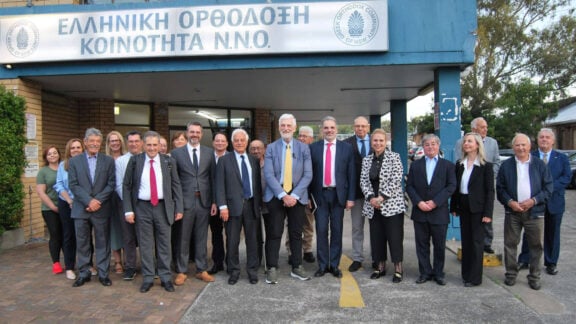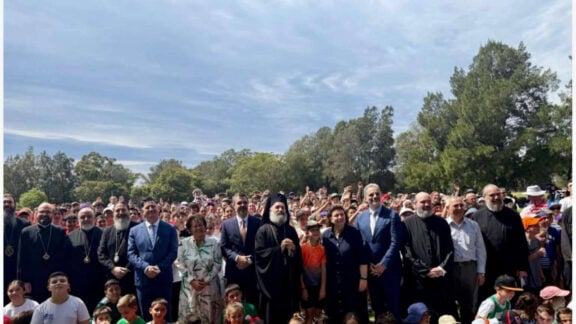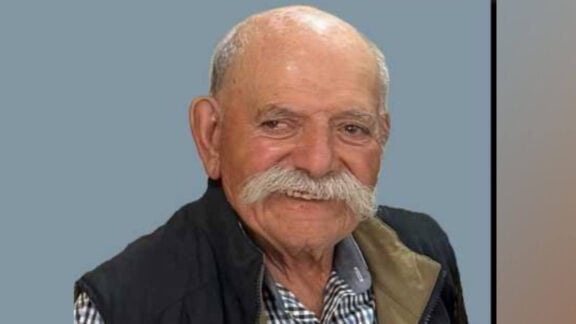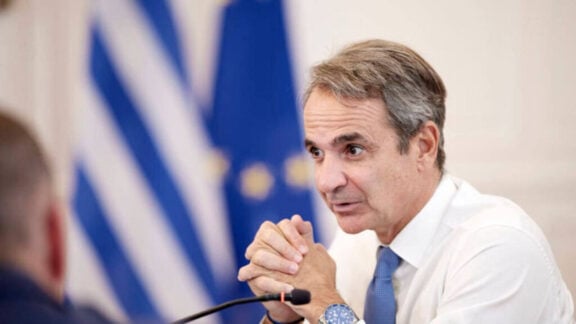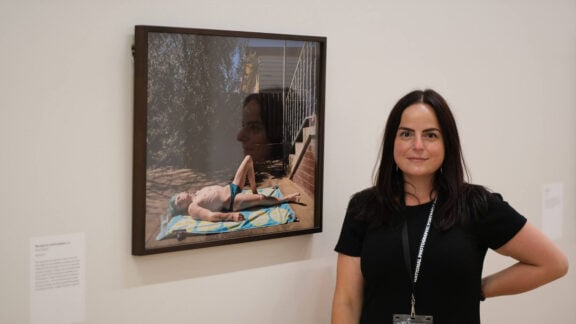Last night, thousands of Melbourne’s Greek Orthodox faithful laid their wreaths at the Epitafio and embraced the message of love and redemption that it represents.
As families around Australia prepare for the ‘Anastasi’, the biggest celebration of the calendar year that signifies Orthodoxy’s new spiritual year, Melbournians are spending more evenings at their local parishes, honouring religious tradition.

Holy Thursday, also known as Maundy Thursday, saw Epitaphs in every Greek church decorated with flowers by the young and old female members of each parish until the early morning hours.

‘Megali Pempti’, is one of the most significant days in the Holy Week leading up to Greek Orthodox Easter. It is the day when the Last Supper took place, and Jesus washed the feet of his disciples, establishing the sacrament of Holy Communion and the priesthood. The Holy Thursday liturgy is a solemn and emotional service that prepares the faithful for the events of Good Friday and the Resurrection.

The Holy Thursday liturgy begins with the Vesperal Divine Liturgy of Saint Basil, which is a solemn and lengthy service that commemorates the Last Supper. During this liturgy, the priest offers prayers of thanksgiving for the bread and wine, which symbolise the body and blood of Jesus Christ. After the consecration of the Holy Gifts, the faithful partake in Holy Communion, which is a sacred and solemn act of receiving the body and blood of Christ.

After the Vesperal Divine Liturgy, the service continues with the Matins of Holy Friday. This is a mournful service that commemorates the betrayal of Christ by Judas and the events leading up to the Crucifixion. During the Matins service, the priest reads from the Gospel of Matthew, recounting the story of Jesus’ betrayal and arrest in the Garden of Gethsemane.

One of the most important parts of the Holy Thursday liturgy is the washing of the feet. This ritual, which is performed by the priest, symbolises the humility and servitude of Jesus Christ, who washed the feet of his disciples at the Last Supper. The priest washes the feet of twelve members of the congregation, representing the twelve apostles, while reciting prayers of humility and forgiveness.

The Holy Thursday liturgy concludes with the procession of the Cross. The faithful follow the priest as he carries a wooden cross around the church, symbolising the journey of Christ to Calvary. The procession is accompanied by solemn hymns and prayers, and the faithful venerate the Cross as it passes by.
GOOD FRIDAY
During the solemn Good Friday ritual tonight the Greek Orthodox Church commemorates the crucifixion of Jesus Christ. It is a day of fasting and prayer, and the services at churches reflect this mood of reflection and mourning. This liturgy in Melbourne is attended by tens of thousands of people of all ages.

The service that takes place in the Church, is one of the longest in duration and is called the “Service of the Twelve Gospels.” It begins in the late afternoon and can last up to three hours. The service is divided into twelve parts, each representing one of the twelve Gospel accounts (Evangelia) of the events leading up to the Crucifixion.

During the service, the priest reads each of the twelve Evangelia, and the faithful listen in silence, standing or kneeling in reverence. The church is usually dimly lit, with only a few candles or lamps illuminating the space, adding to the somber and reflective atmosphere of the service.

With each Evangelio the priest or a deacon carries a large wooden cross and moves around the church, symbolising the journey of Christ to Calvary. The faithful may kiss the cross or touch it as it passes by, showing their reverence for the sacrifice of Christ.
Throughout the service, hymns are sung, and prayers are offered for the forgiveness of sins and the redemption of the world. At the end of the service, the priest carries the cross to the front of the church, where it is venerated by the faithful, who come forward to kiss it and offer their prayers.

As the liturgy moves on, crowds gather to follow the procession of the Epitaphio around the church or through the streets, accompanied by prayers and hymns and lit candles.
This is the last big liturgy before Saturday’s celebratory Resurrection service.


